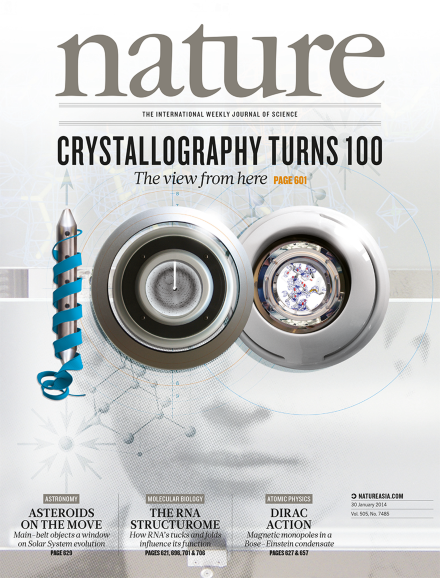Volume 505 Issue 7485, 30 January 2014
Editorial
-
-
Crystal clear
Special:
World View
Research Highlights
Seven Days
News
News Feature
Comment
Books & Arts
Correspondence
News & Views
-
Sources of inspiration
Special:

